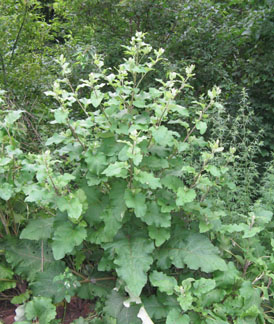
| HOME |
 |
|
The root of common burdock
is edible raw or cooked. The best roots are obtained from young plants.
They are usually peeled and sliced. The roasted root is a coffee substitute
as well. Young leaves and leaf stems are edible raw or cooked, and have
been used as a potherb. They are mucilaginous. It is best to remove
the rind from the stem. Young flowering stems are edible, peeled and
eaten raw or cooked like asparagus. Seed sprouts are reportedly edible
too.
|